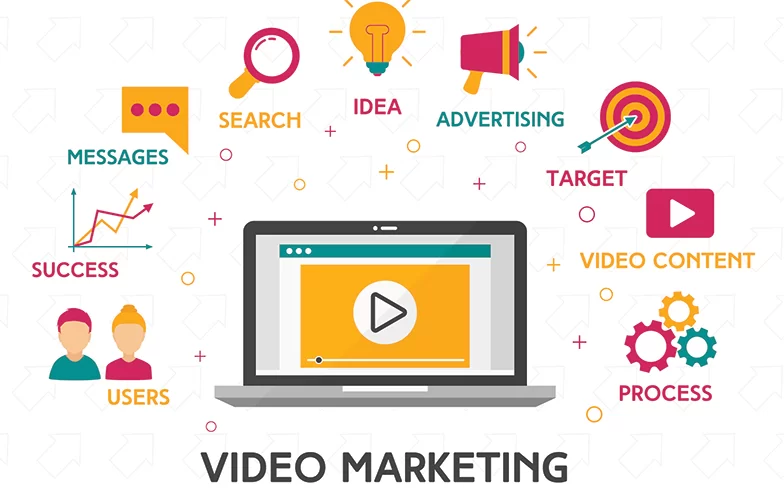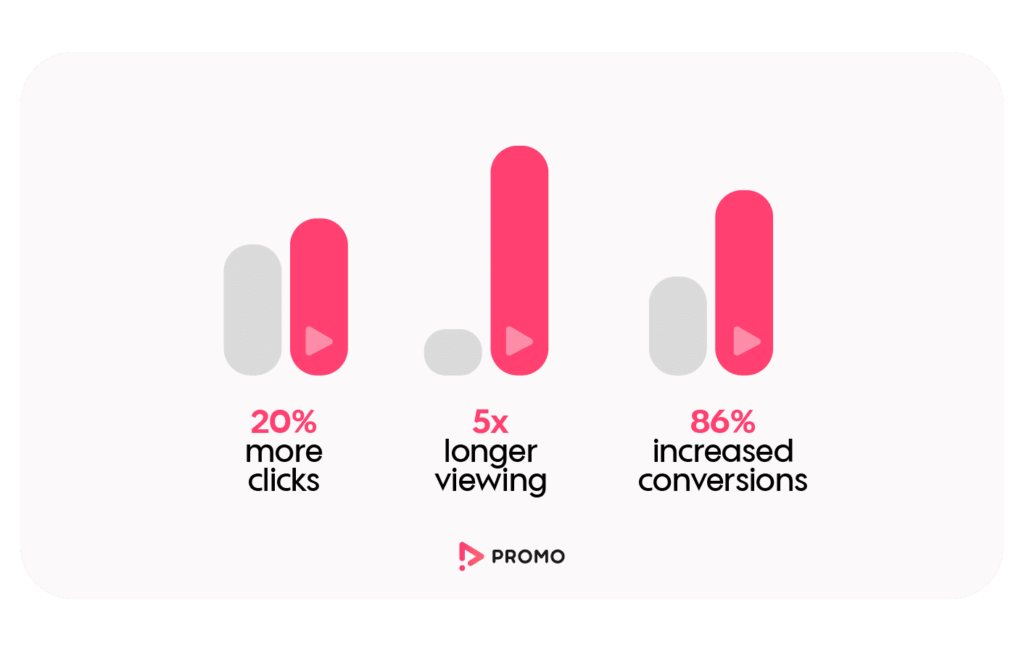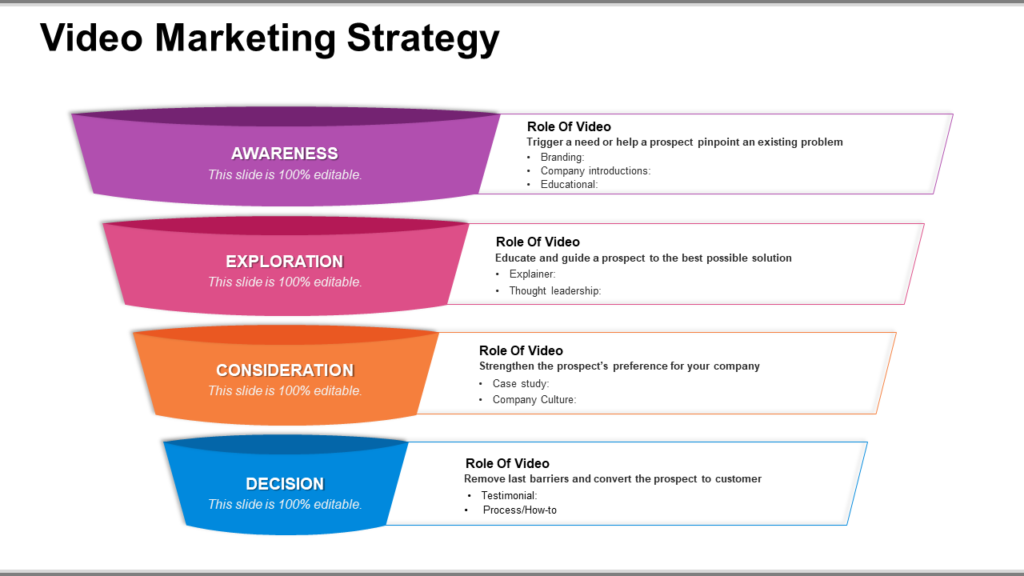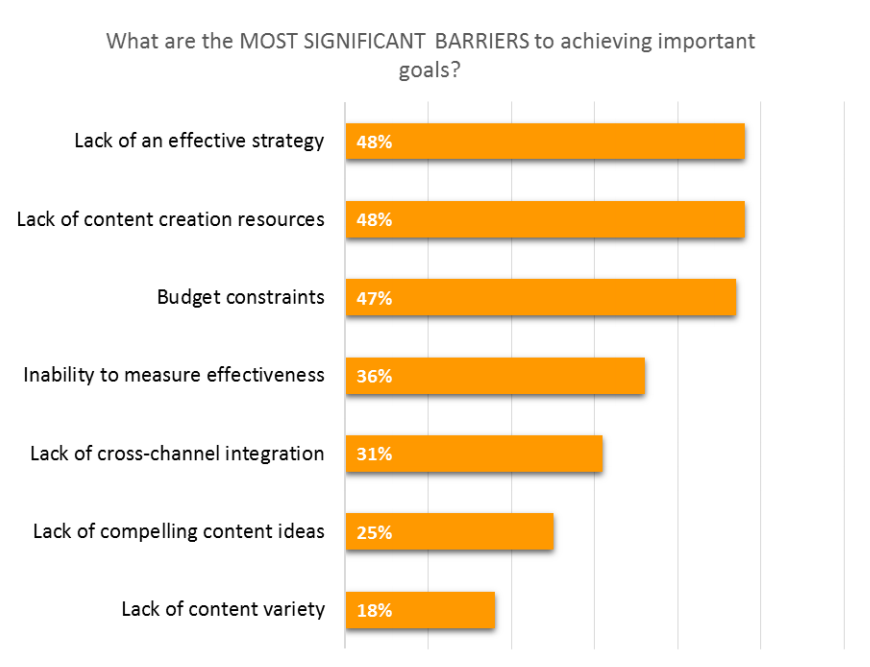
Customers love interactive videos, live streaming, and more. So if brands just stick to images and written content, more is needed. Video marketing is the rage now as brands realize the value and potential of investing in its creation. Despite its growth and potential, it is time to start if you still need to. Without videos, it gets only more challenging for businesses to attract their target audiences. Getting started can be tough for those who have yet to delve into this marketing strategy.

If you want to start video marketing from scratch, this guide is the ultimate source for learning about video marketing.
The Importance of Video Marketing
Videos are undisputed winners among the varied content that engages users. In fact, 92.5% of digital marketers consider video marketing to be a vital strategy. Also, a massive 96% of users, as per a survey, said that they used videos to learn about the software or a product.
There is undeniable growth and excellent brand visibility in video marketing. Many believe that it is the future of digital marketing. So whether you are a small business or a large one, investing in it makes sense.

There are two ways to do video marketing. One is on your own. Learn the ropes, figure out a strategy and execute. The second is to hire a video marketing agency that will take care of everything for you – from content creation to execution to metrics. You may (and it is advisable) be involved with the strategy and at all stages of video marketing with the video marketing agency.
Here are a few valid and strong reasons why you should invest in video marketing.
1. Videos are the best way to showcase how your product works.
How do you showcase your product and how it works? While images are an excellent choice, video content is a much more useful tool. It helps potential buyers better understand the service or product on offer. Customers are more likely to buy something when they know how it works, what it does, and how it helps them. So, video content becomes vital as brands explain things through visual elements.

2. Builds credibility
One of the leading marketing goals for any business or brand is to earn customers’ trust. Video marketing can help build that credibility, especially if it provides solutions. It becomes a medium to communicate and share your brand values. Informative and well-made videos can connect with the target audience, engage them and trigger positive emotions. This can help develop a long-term or lasting relationship.
3. Helps with SEO
Do you want your website to rank on a search engine’s first page? Upload videos to YouTube and find your website ranking for many search terms. Besides getting exposure on Google, videos also feature in keywords on YouTube. After Google Images and Google.com, YouTube has the third largest share in the search market.
4. Improves sales and conversions
Brands are doing everything in their books to increase conversion rates. That is where the importance of video marketing comes in. As per a Google survey, the Korean arm of Nike had an increase of 54% in conversion rates. This was a result of event-driven and tailored video campaigns. Investing in Google ads videos is also a great way to boost your conversion and sales. It does this by engaging viewers and increasing the website’s ranking.

5. You can use videos in many ways.
Digital marketers have many options when it comes to using video content. It then becomes easy to find a strategy that fits into the brand’s marketing goals. While Youtube is the most common place to make videos, there are many other options:
- Social media platforms like Instagram, Facebook, and Snapchat allow stories and reels. These speak to the audience and are cheap and quick to make.
- Live videos on YouTube, Facebook, and other social media platforms have become popular.
- Interact via webinars with potential customers. You can use these to answer specific questions about the product or be a guide to an industry trend.
Elements of a Video Marketing Strategy
Video content is being consumed and has complemented digital marketing. The video can be for fun, sharing information, or instructional. Still, it plays a vital role in the marketing strategy. As per Demand Metric, about 70% of digital marketers use videos for marketing outreach. Up to 82% said their video content had delivered positive results. Given these positive numbers, you should have a video marketing plan. If you want to use video in your marketing strategy, use these elements for better success.

1. Set a goal
Creating and developing a video marketing strategy involves the use of significant resources – irrespective of whether your business or a video marketing agency is working on the content and its distribution. Clearly define your goals before you start video marketing. Define what success means by asking the following questions.
- Do you want to increase brand awareness? In that case, high engagement and view count.
- Do you want more leads? If that is the case, track opt-ins, which might mean success.
- Do you want more customers? Measure the churn rate.
The above are a few samples of goals you can choose. The point here is to figure out your goal so that you can make the content as needed.
2. Work out your style and voice
Once you have set a goal, developing a voice and style is next. Video marketing is about what you say and how you say it. Create a consistent style and use it in all your videos. It would help if you came up with answers to the following questions:
- Will the tone of the videos be professional or simple?
- What kind of graphics do you want to use? Choose something that people can recognize.
- You will also need to define the kind of sound effects and music you can use in the videos.
3. Keep it short
When creating videos, ensure that you don’t take hours of footage. You are not making a movie; you only need a short video. A long video can get boring and may be a waste of your resources. Shorter videos are also a great option if you are unsure about your content. Compared to video length and audience engagement, engagement drops with length increases. Per an analysis of 1,000 Facebook pages, the average view time on Facebook was only 18.2 seconds. This proves that you should build your video marketing strategy on short videos.
4. Choose the proper channels to distribute your videos.
A booming industry, videos have a lot of competition. So when it comes to their video content distribution, there are many choices. But it would be best if you put your efforts into channels that give you the best results. Choose networks based on your goals. If brand awareness is your goal, push content to Instagram, YouTube, or Facebook. Consider a blog post with a video to direct viewers toward opt-in channels if you want more leads.

5. Include a CTA
Sometimes, even though the video is well-made, it may not give great results if you do not have a CTA. Determine what you want your audience to do after viewing the video. If you’re going to boost engagement, you can push other videos to watch. You can ask people to subscribe to more videos. If you wish to have more opt-ins, you can have a CTA that can push your landing page or provide information about the sales team.
Challenges Involved In Video Marketing
Teams that drive video content often find themselves in challenging situations. Here are some of the challenges in video marketing and how to address them.
1. Creating content in a short time
Marketing teams have to create many types of content on many different channels. So many of them find balancing this challenging. And may lack time to create content. The pre- and post-production work is also time-consuming; this involves creating ideas, making transcripts, casting, promoting, etc. The only solution to this is to have an effective strategy.
2. Poor strategy skills
Putting in place a video strategy is one of the most crucial aspects of the success of video marketing. Still, those who use the format say that executing the strategy is the most challenging part of video marketing. To overcome this problem:
- Start by identifying the target audience
- Create timelines
- Align them with stakeholders
- Develop the right messaging
- Set goals
- Determine how you will track the results.
- Choose the proper distribution channels.
Apart from the above, factor in how you will grab the audience’s attention in the first few seconds. Also, focus on how you will promote the content and keep the videos concise.

3. Inadequate budget
An inadequate budget is another considerable challenge for video content marketing teams. The budget should account for everything from storyboarding and creation to promotion. Marketers should first tell stakeholders about the importance of video marketing. Show them stats on the effectiveness of this type of digital marketing. Break it down into pre-production, post-production, promotion, and distribution. This will help you generate proper numbers.
4. Lack of good content ideas
Some marketers also say that poor-quality content ideas are a video marketing challenge. If you are struggling to find effective and high-quality content, here are a few ideas:
- Showcase the brand values as they are effective at getting leads and engagement.
- Choose content that the audience can easily relate to.
- Content showcasing your services or products can give the best ROI.
- Trendy content about the latest news stories or cultural moments attracts an audience.
5 Types of Marketing Videos
The best video marketing generates more traffic and leads, shows your brand personality, shortens the sales cycle, and helps land more deals. Here are some acknowledged video examples.

1. Demo/explainer videos
These videos showcase the working of your service or products. It can be unboxing a product, putting the product to the test, or taking the audience on a product tour. According to the latest marketing stats, 76% said videos aid buying decisions. These powerful videos can break complex topics into fun and appealing ones. So these are effective ways to showcase your service or product.
Check out this demo video by Nespresso. Everything about it instantly attracts the target audience. The setup, the light, the sophistication of the frames and shots. Within less than 90 seconds, you will know whether or not you want to buy one of these machines or how to use them.

2. Brand videos
These are part of an advertising campaign. It showcases the brand’s vision, products or services, and mission. Brand videos also need to be engaging, as that makes them memorable.
Check Airbnb’s brand video. The video uses different types of miniature homes to showcase the various locations the brand is associated with. And the background commentary focuses on how you can book and stay at an Airbnb. Note the tone of voice and the terms used to put the user at ease instantly.

3. Event videos
Are you hosting any event – a discussion, fundraiser, or conference? An event promotion video is a great way to bring the audience to the event. An event promo video must give the audience a taste of the upcoming event. It should reveal the tone and the atmosphere. And it should have an attractive proposition – like meeting the top names in the industry – that grabs eyeballs. Post-event videos are more retrospective and can be used to promote the next event.
Check out the Delta Festival promo video. The video starts with a book opening and a deep voice telling the story introducing the Delta Festival. The video sequences include glimpses of music, fun, and the event’s electric atmosphere.
4. Interviews
This is one of the most common types of videos. Interviewing thought leaders, industry experts, or celebrities build authority and trust. Look for influencers in your domain, interview and present them to the audience.
5. Customer testimonials
Your potential customers want to know what problems your business can solve. One of the best ways to show that is by creating case studies with satisfied and happy customers. These people are the advocates of your brand. They can describe their challenges and how the product or service solved them.
Conclusion
Marketing videos for business allow you to connect with prospective clients. Use the power of video and get more reach. You can convert prospects into subscribers, leads into customers, and more.
Key Takeaways
- Content for digital marketing does not start and end with text alone.
- Text and images are important to get the message across.
- Videos have a massive reach and should be an essential part of any marketing strategy.
- To succeed, video content has to be of high quality.
- Short, crisp, and concise content with an eye on engaging the target audience is the need of the hour.
FAQ’s
There are countless types of videos, instructional videos, brand videos, FAQs, and more. But depending on the goals, certain types are better than others. Videos with better impressions are the most popular, like commercials, brand videos, demo videos, testimonials, and product videos.
Pre-production, production, and post-production are the three major stages of video production. These stages are further subdivided into many other steps. For example, pre-production can include brainstorming, scripting, storyboarding, and preparation.
Yes. Video marketing has many benefits; among them is improving your SEO. Search algorithms rank web pages with videos in their searches. Besides helping the website rank better, videos make the snippet more eye-catching. So your website is more likely to rank before other pages that do not have videos.
Latest Blogs
Learn how to rank on AI search engines like ChatGPT, Perplexity, and Gemini by optimizing your content for authority, structure, and relevance. Stay ahead in AI-driven search with this strategic guide.
Explore the best healthcare SEO services for your medical practice. Improve online visibility and effectively reach more patients in need of your services.
Discover top social media agencies specializing in banking solutions, enhancing financial services and driving engagement.
Get your hands on the latest news!
Similar Posts

Video Marketing
6 mins read
Harnessing the Power of Real-Time Video Content

Video Marketing
7 mins read
Personalized Video Marketing: The Future of Tailored Content

Video Marketing
6 mins read